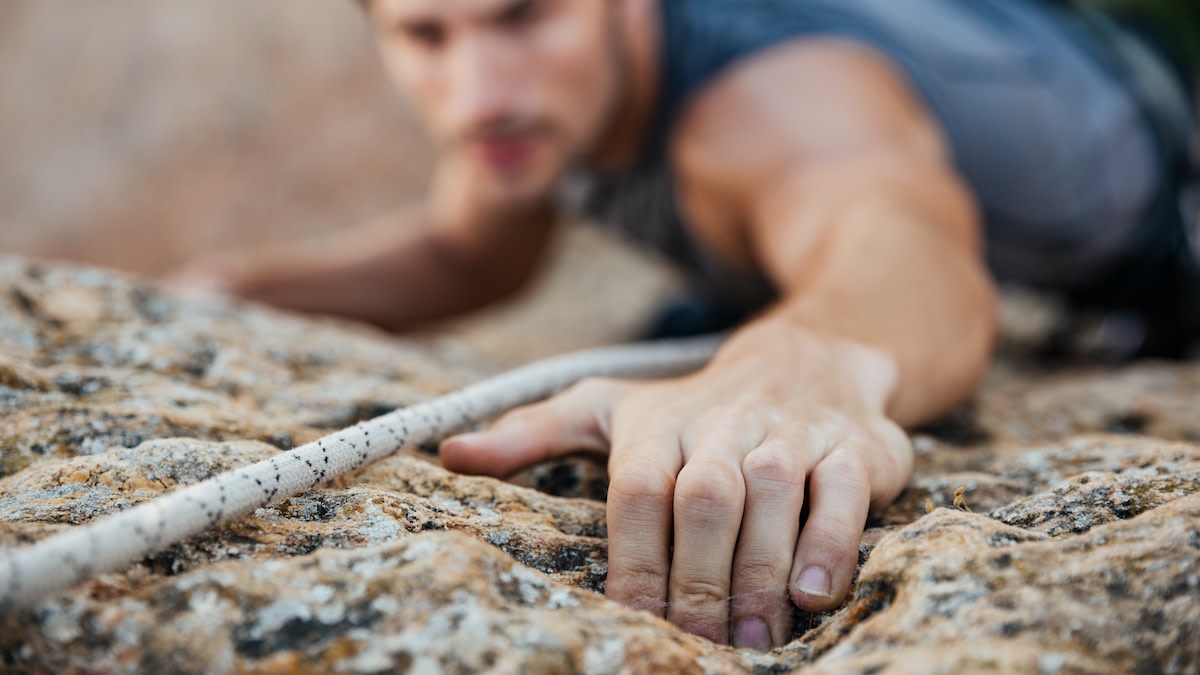Half Crimp Grip in Climbing: When to Use a Half Crimp Grip
Written by MasterClass
Last updated: Oct 15, 2021 • 2 min read
In the sport of rock climbing, the half crimp grip finds the happy medium between the power of the full crimp grip and the sustainability of an open hand grip.
Learn From the Best
What Is a Half Crimp?
A half crimp is a type of grip climbers use in the sports of bouldering and rock climbing. You can execute this grip technique by placing your fingertips on a handhold and then curling your fingers at the second joint. Your thumb rests in a natural position on the side of your index finger. It does not touch the climbing hold; your index finger, middle finger, ring finger, and pinky do all the work.
The half crimp grip uses your natural finger strength to help propel your bodyweight upward. Yet unlike the full grip position (also called a closed grip position), the half crimp does not place your thumb on the handhold. Instead, your thumb rests against the side of your hand, and your fingers provide all the grip strength. This lowers the risk of injury to your finger joints and tendons.
Half Crimp vs. Full Crimp: What’s the Difference?
The half crimp position and full crimp position are nearly identical with one key difference.
- Both involve gripping with your fingertips and locking your finger joints. In both the half crimp grip and full crimp grip, your index finger, middle finger, ring finger, and pinky grip the rock surface, and your fingers lock at the second joint.
- The full crimp adds your thumb. In a half crimp, your thumb presses naturally against the side of your index finger. In a full crimp, you do everything you would in a half crimp but then press your thumb down on the fingernail of your index finger, locking it in place.
When to Use a Half Crimp Grip
Most seasoned climbers use the half crimp position to add power to their climbing performance. The half crimp hand position helps you grip small holds that may only have room for the pads of your fingers and comes in handy when you’re negotiating narrow edges. Although half crimps are not as physically taxing as full crimps, they still come with a risk of injury to your finger joints and even your shoulders. When you have more surface area to grab—such as on gentle slopes—use a different grip like an open hand grip.
To safely practice the half crimp grip, use a hangboard (also called a fingerboard), a practice tool commonly found in indoor climbing gyms. Try a set of hangboarding repeaters where you consciously dead hang without full crimping. Get comfortable with isometric (static) finger grips to improve your chances of climbing without injury.
How to Stay Safe When Using the Half Crimp Grip
Repeated use of the half crimp grip can lead to injury of your hand tendons and can place great strain on your shoulders as you propel yourself upward. Always warm-up before a crimping-intensive climb. If you are a member of a climbing gym, ask a trainer or seasoned climber to help you design a strength-training program to help you develop the needed finger power to execute full crimps and half crimps.
Before You Start Climbing
Climbing is a high-impact activity with an elevated risk of serious injury. Practice, proper guidance, and extensive safety precautions are essential when attempting a climbing pursuit. This article is for educational and informational purposes only and is not a substitute for professional instruction or guidance.
Ready to Give “On the Rocks” a Whole New Meaning?
Take your climbing mastery to new heights with the MasterClass Annual Membership and exclusive video lessons from Alex Honnold and Tommy Caldwell, two of the world’s most accomplished climbers. Together they’ll help you get a grasp on climbing holds, balance, footwork, and more, plus teach you the ins and outs of ethical outdoor exploration.
